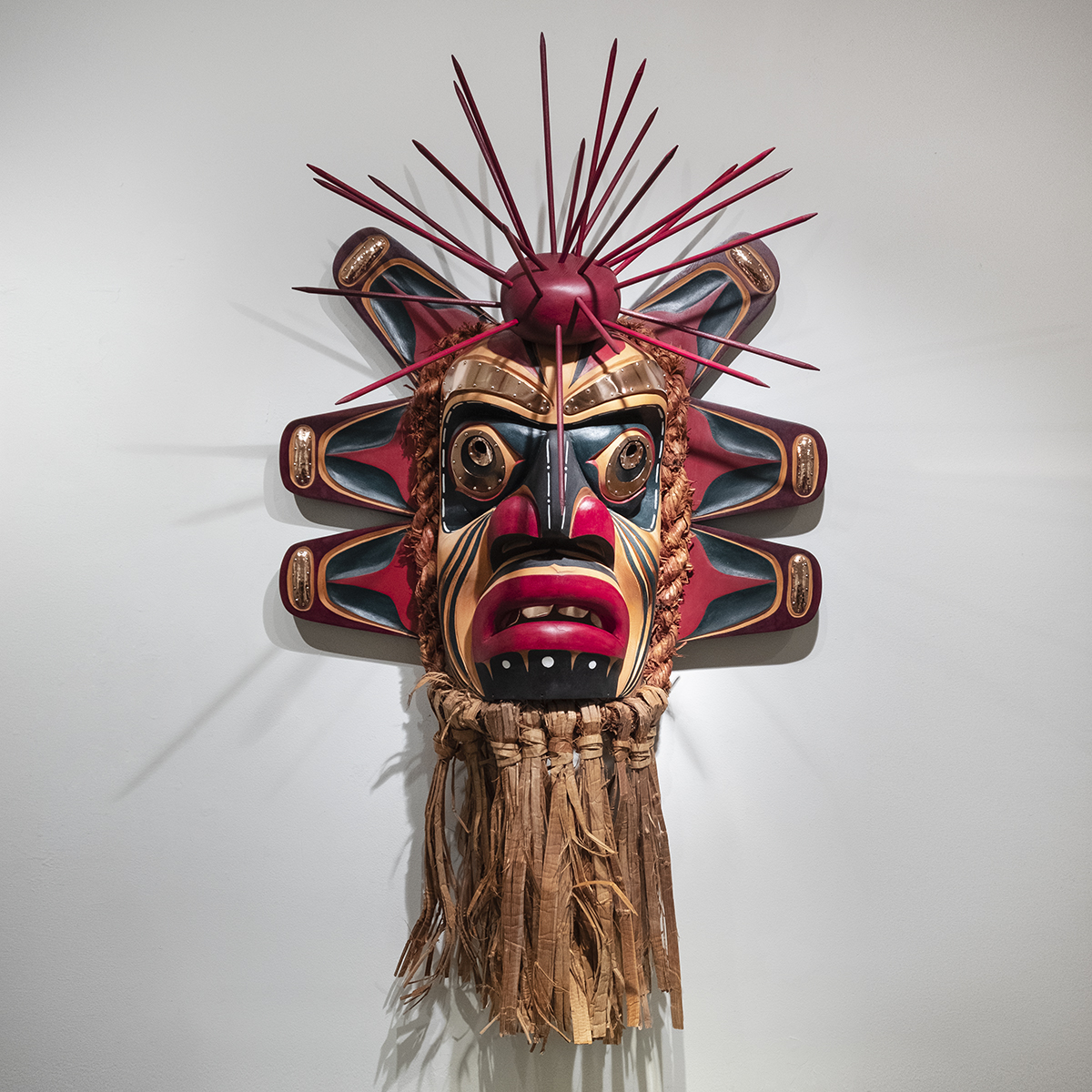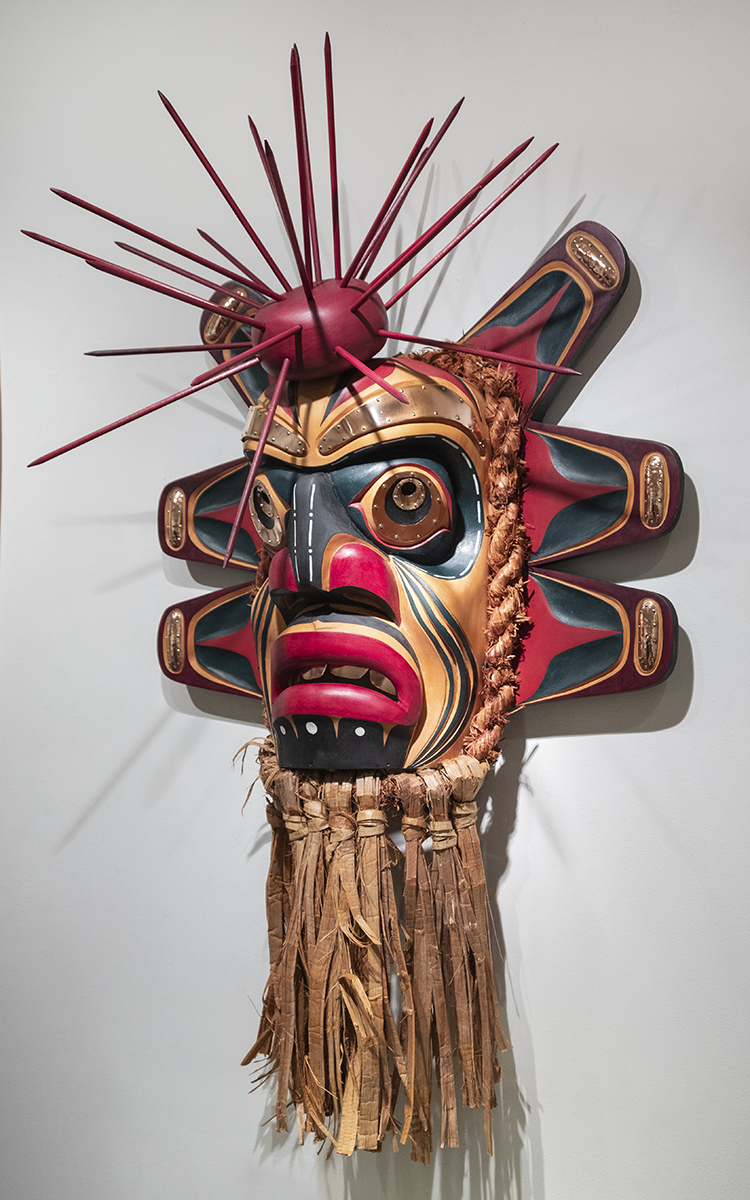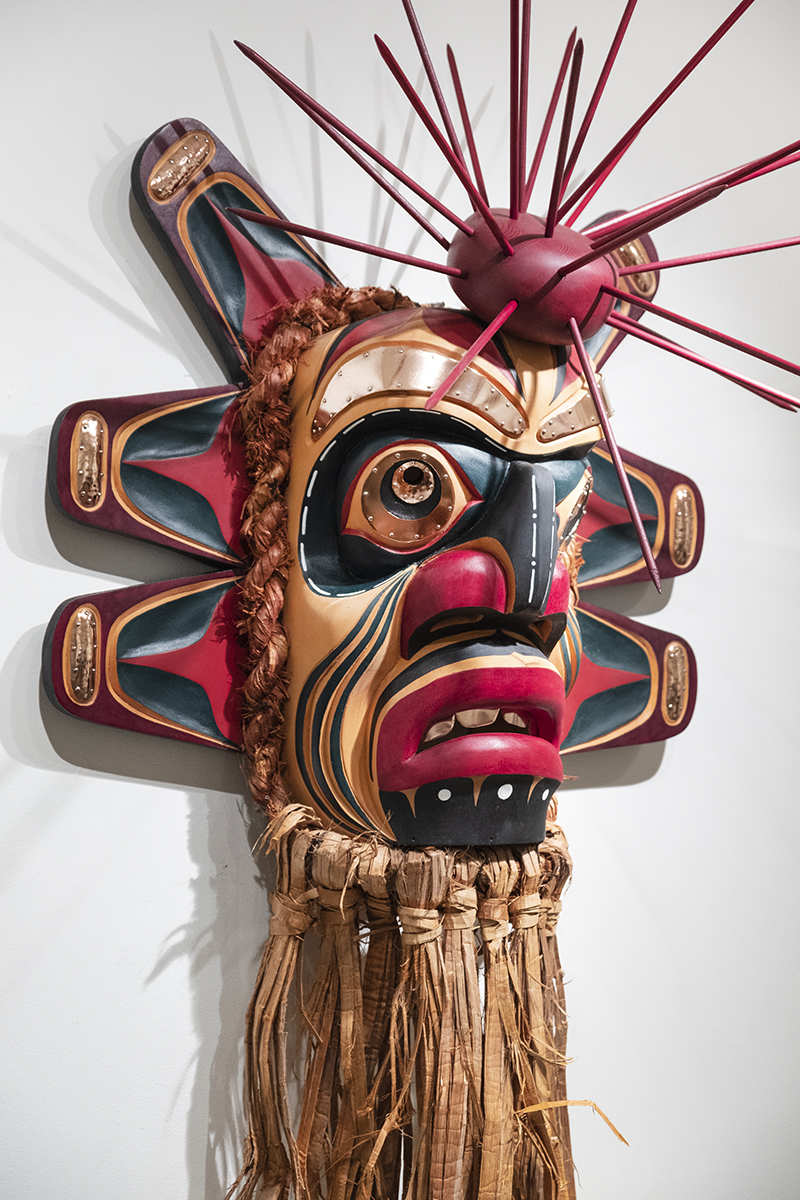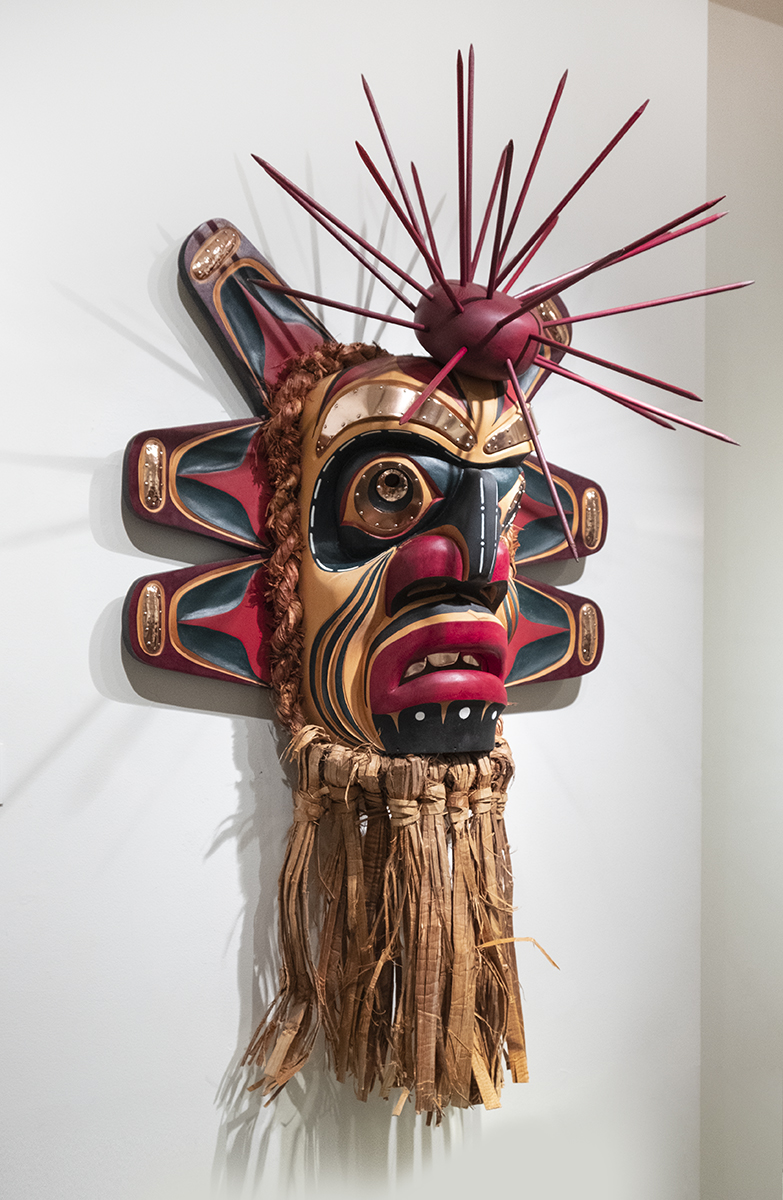Ḱumugwe’ Mask
Ḱumugwe’ has various spellings, including Komokwa.
“Of major importance in the Kwakiutl myth, Komokwa was the Kind of the Undersea World, Master and Protector of the Seals, who were a symbol of wealth. His name means “Wealthy One,” and he ruled from a great, rich house under the water. His house posts were live sea lions that guarded the entrance. The house contained great wealth in blankets, coppers and other treasures. Many human supplicants of the legendary history tried to research this kingdom and those ancestral heroes who achieved their goal became wealthy and powerful, returning to their home village with magical boxes full of treasure.
Another name for Komokwa is Copper Maker. It is told that he married a high-ranking woman named Born to Be Copper Maker Woman – Tlakwakilawokwa – which is a very high-ranking name among Kwakiutl people. A myth of the Bella Bella claimed that it was her return home with a variety of Komokwa’s gifts that was the occasion of the first Dluwalakha dance.
As a ruler of the sea, Komokwa was associated with loons, seals, octopods, killer whales and sculpins. Komokwa is also associated with rising tides and whirlpools.
An interesting point of identification associated with the Komokwa masks concerns the round protuberances found on many of them. These were said by Mungo Martin to be octopus tentacle suckers. Another researcher said, however, “these are air bubbles, “and a third stated “these are sea anemones eating.” The significance of these inquiries is that all of these identifications, regardless of their varied interpretations of the round markings, indicate Komokwa’s undersea nature.
The Komokwa mask is arresting and powerful, it is also nonhuman, characterized by round, staring eyes, heavy eyebrow ridges, a powerful, short wide nose with flared or emphasized nonhuman nostrils and thick lips deeply carved and emphasized with paint. Dark green is often used in significant amounts as the key color evoking the water environment, with black as a secondary color. The undersea nature of Komokwa is manifested in other characteristics: carved parallel grooves, indicating gill slits; scalloped lines representing fist scales and bifurcated fishtail lines.”
Excepted from Kwakiutl Art by Audrey Hawthorn




